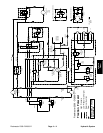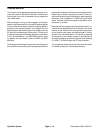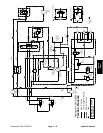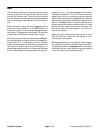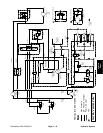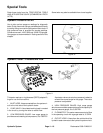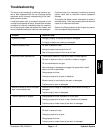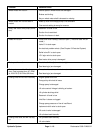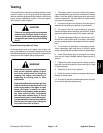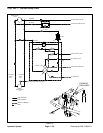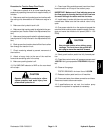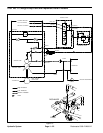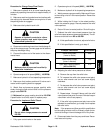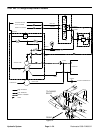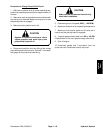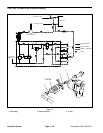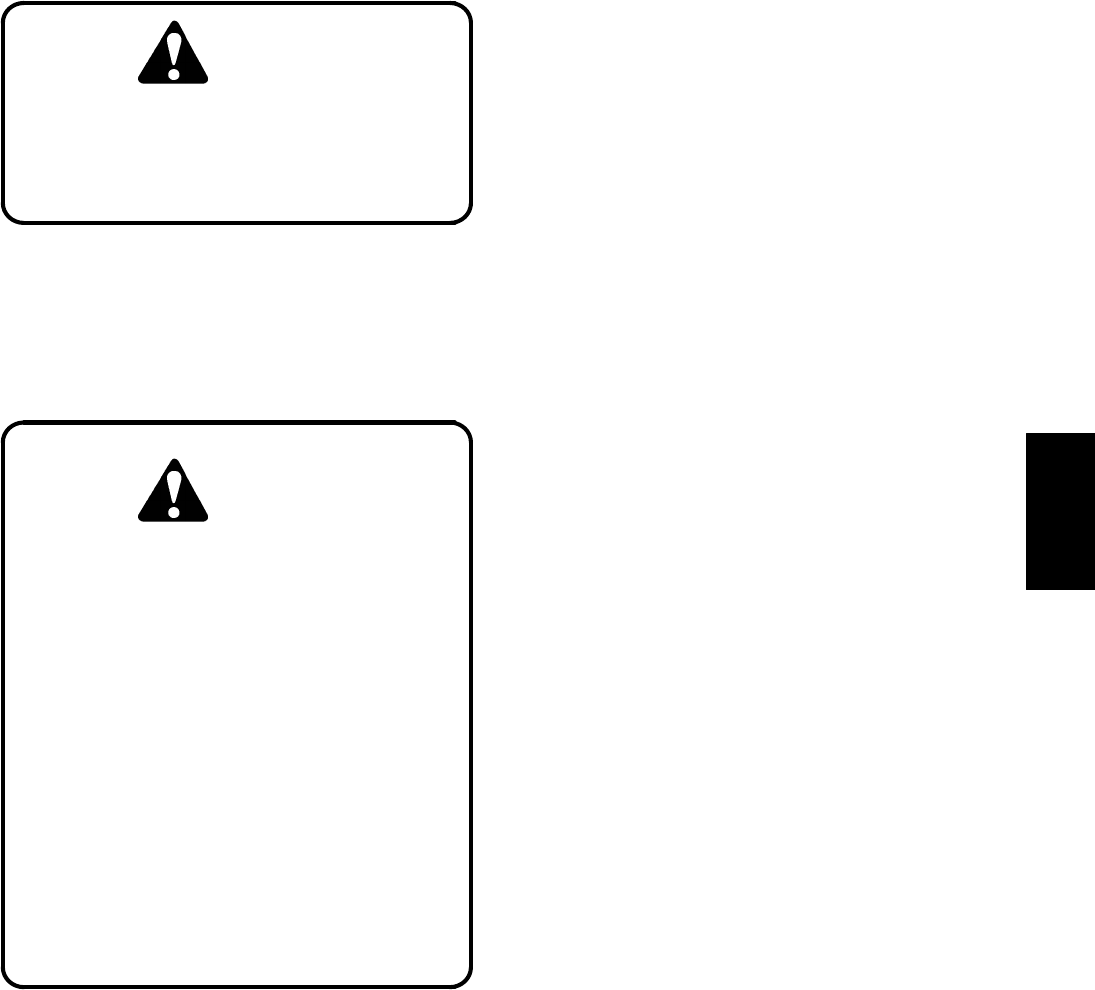
Reelmaster 2300–D/2600–D Hydraulic SystemPage 4 – 19
Testing
The most effective method for isolating problems in the
hydraulic system is by using hydraulic test equipment
such as pressure gauges and flow meters in the circuits
during various operational checks. (See the Special
Tools section in this Chapter.)
CAUTION
Failure to use gauges with recommended
pressure (psi) rating as listed in test pro-
cedures could result in damage to gauge
and possible personal injury from leaking
hot oil.
Before Performing Hydraulic Tests
All obvious areas such as oil supply, filter, binding link-
age, loose fasteners, or improper adjustments must be
checked before assuming that a hydraulic component is
the source of the problem being experienced.
Before disconnecting or performing any
work on the hydraulic system, all pres-
sure in the system must be relieved by
stopping the engine and lowering or
supporting the cutting units or other
implements.
Keep body and hands away from pin hole
leaks or nozzles that eject hydraulic fluid
under high pressure. Use paper or card-
board, not hands, to search for leaks.
Hydraulic fluid escaping under pressure
can have sufficient force to penetrate
skin and cause serious injury. If fluid is
injected into the skin, it must be surgical-
ly removed within a few hours by a doctor
familiar with this type of injury. Gangrene
may result from such an injury.
WARNING
1. Thoroughly clean the machine before disconnect-
ing or disassembling any hydraulic components. Always
keep in mind the need for cleanliness when working on
hydraulic equipment. Contamination will cause exces-
sive wear of components.
2. Put caps or plugs on any hydraulic lines left open or
exposed during testing or removal of components.
3. The engine must be in good operating condition.
Use a tachometer when making a hydraulic test. Engine
speed can affect the accuracy of the tester readings.
4. To prevent damage to tester or components, the in-
let and the outlet hoses must be properly connected,
and not reversed (tester with pressure and flow capabili-
ties).
5. To minimize the possibility of damaging compo-
nents, completely open load valve in hydraulic tester
(when using tester with pressure and flow capabilities).
6. Install fittings finger tight, far enough to insure that
they are not cross–threaded, before tightening with a
wrench.
7. Position the tester hoses so that rotating machine
parts will not make contact with them and result in hose
or tester damage.
8. Check the oil level in the reservoir.
9. Check the control linkage for improper adjustment,
binding or broken parts.
10. All hydraulic tests should be made with the hydraulic
oil at normal operating temperature.
Hydraulic
System
Hydraulic
System



